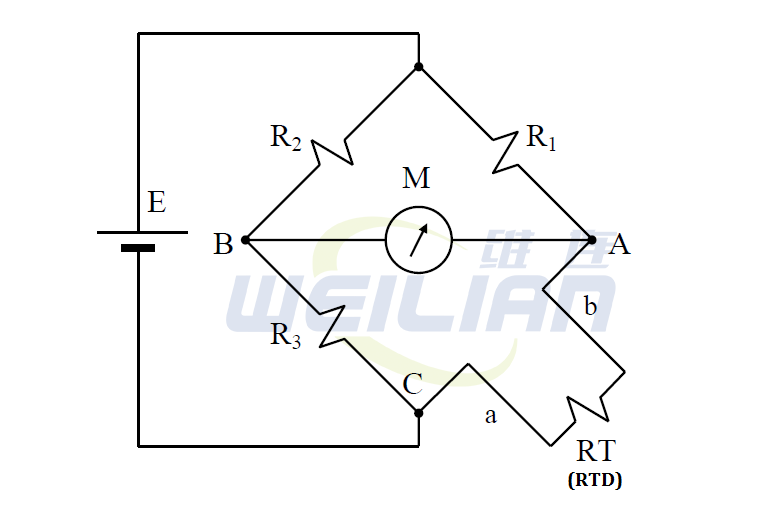
How to measure the temperature of the RTD temperature sensor
Use RTD / resistance thermometer to measure temperature
RTD temperature sensor resistance changes with temperature. Therefore, the RTD temperature sensor resistance will be used to measure the temperature.
The easiest way to measure the RTD temperature sensor resistance is to inject the constant current into the RTD temperature sensor and measure the voltage generated by both ends of the RTD temperature sensor. However, the Whistoton bridge circuit as shown in the figure is usually used to detect resistance changes in the resistance thermometer (RTD).
The values of the fixed resistor R1, R2, and R3 are very accurate, while RT represents the RTD temperature sensor resistance with lead A and B. When the voltage between point A and point B is zero, the bridge is called zero -balance state. This occurs when RT = R3 × (R1/R2), which causes VAC = VBC, causing the readings on the multimeter to become zero.

The components will correspond to the zero or set point output from the resistance thermometer (RTD). As the temperature rises, the resistance RT of the resistance thermometer (RTD) will increase, causing the bridge to become unbalanced, and the meter M will display the readings. The instrument m can calibrate at a temperature unit, or VAB can be converted to a standard 4 to 20 mA or 1 to 5 V signals.
The current flowing through RTD must be kept as low as possible (<1 ma) as much as possible to maximize the error caused by the temperature rise caused by the I2R loss and the RTD itself.
Note: The above -mentioned Wwitong bridge circuit is considered 2 line RTD.
Also read: How to eliminate the lead resistance in the 3 -line RTD temperature sensor?

